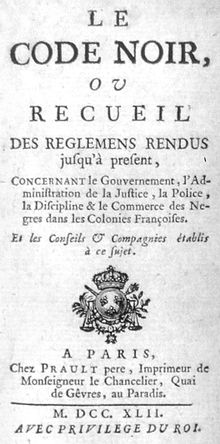The Commoditization of Hybridity in the 1990s U.S. Fashion Advertising: Who Is cK one?
in Beyond the Frame: Women of Color and Visual Representation
Palgrave MacMillan
September 2005
272 pages
5 1/2 x 8 1/4 inches
Hardcover ISBN: 978-1-4039-6533-2, ISBN10: 1-4039-6533-1
Edited by
Neferti X. M. Tadiar, Professor of Women’s, Gender & Sexuality Studies
Barnard College, Columbia University
Angela Y. Davis, Distinguished Professor Emerita
University of California, Santa Cruz
pages 31-47
Laura J. Kuo

…an important caveat follows for postcolonial practices,namely the risk that hybridity might be re-colonised by the apparatus of power as either compensation for our losses,or as the velvet glove of enjoyment that goes hand in hand with the iron fist of exclusion. —Kobena Mercer
How does a concept like hybridity travel within different economies—between the academy, activist arenas, and the media, for example—and what forms does it take on within these smart mutations? Is the adoption of a complex concept like hybridity by the media the simple appropriation of culture by capital? The usages, travels, and permutations of hybridity are more complex and elaborate than a blanket confiscation of its political value. After all, capital is culture (among other things) and hybridity is another sign within postmodern commodity systems. By engaging the structure of these systems we can begin to identify the ways in which hybridity operates within—and in the service of—the dominant logic of postmodern capitalist neoliberalism, and its massive contradictions. In this essay I investigate hybridity as a site of possible transgressions of fixed identities, and as a potentially productive space that has been recolonized by market multiculturalism—a space that views everyone as mixed and thus elides structural differences and persistent hierarchies of race, class, gender, and sexuality.
Specifically within the context of advertising, hybridity becomes, atone level, a strategy that stabilizes discursive power relations within transnational capital. For example, there are complex relations between multinational corporations in the United States and U.S./Third World and gendered immigrant labor practices on the one hand, and the cooptation of political coalitional work on the other. At another level, images of hybridity in advertising generate value in a global world where these commodities circulate. Certainly, a racialized economic hegemony is stabilized through appropriations of racial diversity discourses within market multiculturalism. Yet it is too easy to declare that global capital exploits the labor of women of color in the Third World and in the United States, that advertising hides this exploitative relationship, and that the images therefore should be criticized and dismissed. Instead, I am interested in the way in which this practice of “hiding” constitutes a necessary vector of postmodern diference that enables the dominant logic of late capitalism, which inturn depends upon exploitation, appropriation, and difference. Advertising hybridity becomes complicitous with the act of hiding, yet at the same time images of hybridity open up new communities of possibilities for people who take up the ads within their specifics of home and place, looking toward new forms of identifications and affective communities withinc apitalism’s cultural logic.
The observations in this essay are based on the principal photograph of the cK one advertising campaign, which has been displayed prolifically on billboards and in magazines. This photo (see figure 2.1), which served as the prototype on which other early cK one ads were based, is called “Jenny, Kate & Company” in the Calvin Klein Cosmetics press packet. Using this ad as a sort of case study, I investigate how images of hybridity and multiculturalism in advertising serve to conflate race, class, gender, sexuality, ethnicity, nation, and culture within a totalizing logic of neoliberalism. I call the discursive practice of homogenizing race, class, nation, gender, sexuality, ethnicity, andculture—and the elision of the specificities of their individual locations and their intersections—commoditized hybridity. Commoditized hybridity is a manifestation of a particular practice of the relentless marketing of race. It is informed by processes of consumption of race within postmodern capitalism. Commoditized hybridity also can be represented under the guise of “multiculturalism.”…
…The cK one photos establish hybrid racial relations through biologistic portrayals of appearance. The staging of the models constructs whiteness as a racial essence cosmetically arranged with “other” racialessences in order to convey an impression of harmony/unity/solidarity. In this respect, cK one potentially closes off a space to discuss the different positions whites and people of color occupy in relation to practice,history, and social formations, and structures and relations of power.Through juxtapositions of differently racialized bodies in its ads—which are staged against a homologous black and white backdrop—cK one constructs a notion of multiraciality that postures as social diversity. The hybrid figures of 1990s fashion are bodies on which a racialized seamlessness/sameness is inscribed. The models in cK one photos are racially diverse, and when they are staged together they signify the currency of a multicultural decade. Their bodies are arranged together and “equalized” in a contrived dynamic through photographic distortion and a deliberate homogeneity of height, weight, pose, style, and expression that invokes a sense of cultural similarity, of oneness. The images are presented in black and white, creating a ground tone of similarity against which difference, as separation, is muted, and heterogeneity is emphasized. The models are always already in contact, integrated, and hybrid. They are aesthetically seductive—extremely cool, hip, and sexy—and they become part of the lure to cK one-ness. The models of color appear to be “one” with the white models, creating an illusion of common social and economic positions and cultural identifications. The commoditization of hybridity takes rich heterogeneous spaces of racial and cultural diversity and turns these spaces of promise against their potential, effectively disrupting their ability to spawn real social change. It recolonizes desirable and hopeful formulations of cultural hybridity and transforms them into weapons against the spectator. In short, these ads erase historical memory and social analysis, offering fragrance in return…
Read the entire chapter here.






